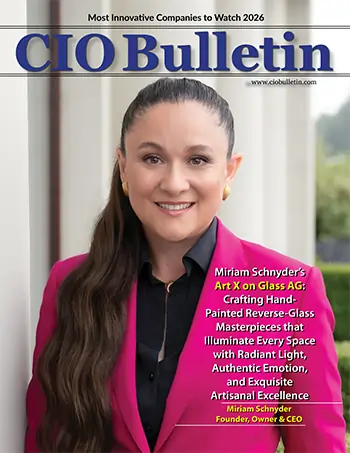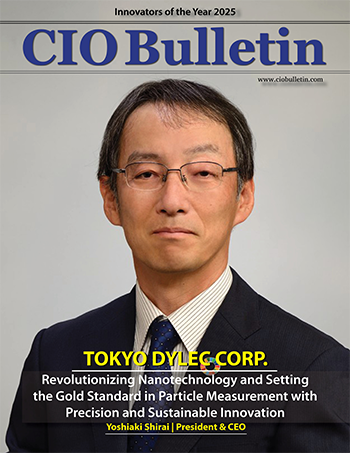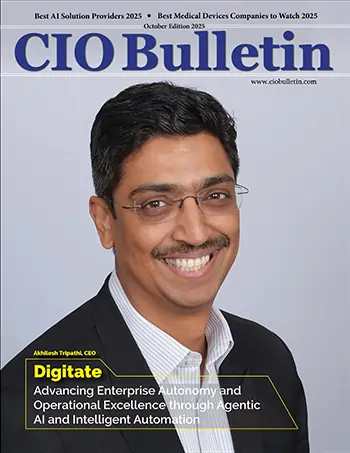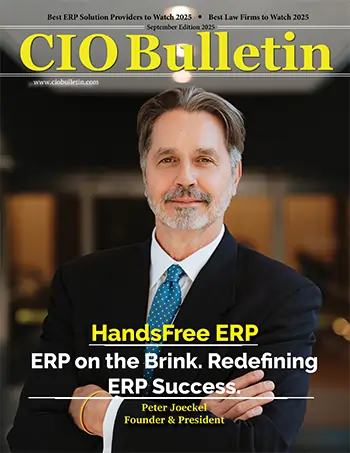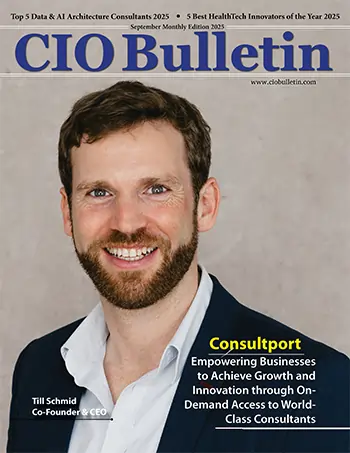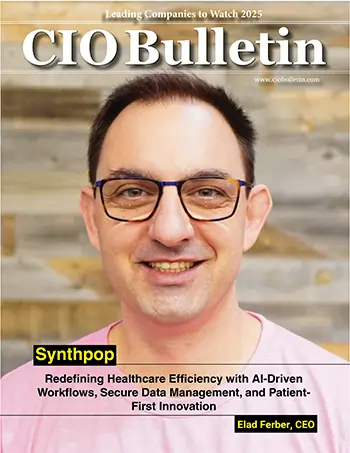Home Leadership Review Cfo From Accounting Ledgers to Dee...
Cfo
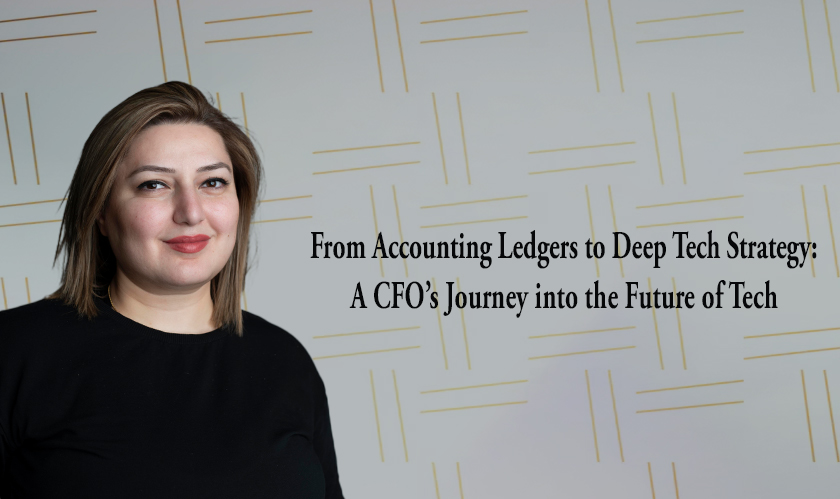
CIO Bulletin
23 June, 2024
-Ava Lopez
An exclusive interview with Maria Azatyan, Financial Architect for AI, Robotics, and DeepTech Startups
In a world where CFOs often stay anchored in balance sheets, one woman chose the stars.
Maria Azatyan began her career reconciling financial reports manually, long before the rise of AI and real-time data. Today, she designs scalable financial architectures for deep tech startups around the world, enabling breakthrough companies in AI, Robotics, and New Space to raise capital, build trust, and scale responsibly. Guided by data, empowered by AI, driven by purpose. Her proprietary modeling framework has been adopted by National Innovation Center and cross-border startups alike — and she’s just getting started.
Maria Azatyan’s journey is not just one of professional growth — it’s a transformation of the CFO role itself: from a traditional “guardian of the budget” to a strategic driver of innovation, technology, and business expansion.
We sat down with Maria to uncover how she transformed the traditional CFO role into a visionary force in the frontier sectors of tomorrow.
I started in a multinational chemical and mineral company, doing accounting, taxes, and management reporting. But I quickly realized numbers weren’t just about compliance — they were the language of business itself. I became fascinated by startups and investment dynamics, watching venture programs on TV and dreaming of something bigger. That’s when I decided to evolve from reporting the past to helping businesses shape their future.
The transition felt natural. At Alsart, I was first exposed to the development and sale of digital products. That’s when I realized that traditional accounting couldn't keep up with this new reality. I had to create my own financial models — factoring in tokens, R&D cycles, and hybrid product structures. It was complex, but incredibly exciting.
Later, I joined DocDoc, where finance became deeply integrated with analytics, CPA-based models, and big data. From there, I moved into AI, Robotics, and SpaceTech. Each new sector demanded a different level of depth — and a new kind of mental flexibility.
Honestly? I'm inspired by the people who are changing the world. I want to be close to those who invent. These are the startups working in AI, Deep Tech, and Space. Yes, it’s more complex. The risks are higher. But in this space, I feel that my knowledge isn’t just used for reporting — it actually drives growth and supports strategic decisions.
And beyond all that… I genuinely love everything related to the future.
I designed my financial modeling system with one goal in mind: to bring clarity, integrity, and strategic power into environments defined by complexity and rapid change. It’s not just a spreadsheet — it’s an architectural foundation for decision-making.
All assumptions and input data are housed on a single, centralized sheet. From there, the entire model generates itself — forecasts, KPIs, income statements, cash flows, and investor-ready dashboards. This eliminates human error, speeds up analysis, and ensures that the logic is fully transparent — even for founders without a financial background.
The structure is minimalist, but the logic is robust. It adapts easily to shifting hypotheses, making it ideal for fast-moving startups where scenarios can change weekly, sometimes daily. It’s more than a tool — it’s a strategic language shared between founders, investors, and product teams.
What makes it unique is that it was built not for analysts, but for visionaries. It allows entrepreneurs to see — clearly and quickly — what works, what breaks, and where their runway truly leads. That’s why it’s been adopted by companies across industries: from telemedicine platforms and robotics startups to government innovation agencies like Armenia’s National Center for Innovation and Entrepreneurship (NCIE), where it was used to validate deep tech investment cases and build trust with international investors.
In a world full of complexity, this model restores clarity — and gives decision-makers the confidence to move boldly.
To me, a CFO isn’t just someone who crunches numbers. A real CFO sees future scenarios, lays the foundation for critical decisions, and shows founders where their model is solid — and where it’s beginning to crack.
An architect doesn’t just build — they design with intention. And finance is the structural framework of any business. Without it, even the boldest vision collapses.
AI has been nothing short of transformative in my professional evolution. It didn’t just optimize my workflow — it completely redefined my value as a financial leader.
Before these tools, much of my time was consumed by manual preparation: building reports, checking formulas, chasing inconsistencies. Today, platforms like ChatGPT and Excel Copilot have lifted that burden, freeing me to focus on higher-order thinking — interpreting data, generating insights, and guiding strategic decisions. Business intelligence tools now help me visualize performance in real time and simulate outcomes with precision.
But more than that, AI has become my thinking partner. It enhances the quality of my forecasts, flags patterns I might overlook, and helps me pressure-test different scenarios — instantly. It doesn't replace my expertise — it amplifies it.
I now operate two steps ahead, anticipating rather than reacting. My conversations with founders and boards have shifted from “what happened” to “what’s possible” — and how we can act on it before the market moves.
In this new reality, AI isn’t just a tool. It’s an extension of my strategic mind. It has allowed me to move beyond the operational side of finance and step fully into my role as a co-architect of business growth and innovation.
I always try to translate finance into the language of the product — and vice versa. I make an effort to understand how the technology works and how it impacts the economics behind it.
Engineers appreciate it when you don’t just hand them an Excel sheet to fill out. They respect it when you show up with a real understanding of their system architecture.
We sit down together and co-design — both the technical system and the financial logic behind it.
I speak their language. I don’t ask engineers to fill out rigid Excel sheets — I sit with them, understand their architecture, and translate it into economic terms. We co-design both the tech and the financial logic. That mutual respect builds strong, data-driven decisions.
Being a woman in Deep Tech is both a challenge and a responsibility. It hasn’t always been easy. In many rooms, people initially assumed I was there for the “soft skills.” They didn’t expect me to be the one leading the financial architecture, driving scenario strategy, or asking the toughest analytical questions.
Sometimes, you have to earn respect twice — first by showing up, and then by proving you belong. But once you demonstrate precision, speed, and vision, that respect becomes permanent. You’re no longer seen as an exception — you’re seen as essential.
I’ve never tried to imitate men. I don’t believe strength has to look like aggression. My power comes from intelligence, clarity, empathy, and strategic depth — qualities that are often undervalued but absolutely vital in a space driven by complexity and invention.
What I’ve learned is that presence matters. When you bring confidence backed by competence, when you speak the language of engineers and investors alike, when you hold your ground and uplift others — you shift the dynamic around you.
And the most inspiring part? I’m no longer alone. There are more and more women entering Deep Tech who bring not just brilliance, but courage. We’re not just participating — we’re redefining the field.
That project was DocDoc — and it changed everything.
I wasn’t just managing finance. I was at the center of a high-stakes acquisition discussion with Sberbank, one of the largest financial institutions in Eastern Europe. I led the financial modeling that underpinned the deal, developed integration scenarios, and translated complex CPA logic into clear, scalable strategy. But it went far beyond numbers.
I immersed myself in data science, working side by side with analytics teams to align financial models with real-time behavioral data. I started asking deeper questions: not just “Can we afford this?” — but “How do we engineer growth that’s resilient, measurable, and investor-ready?”
That experience was a quantum leap for me — not only in technical sophistication, but in strategic vision. I began thinking like a system designer, not just a financial controller. I saw how finance could be the connective tissue between technology, business, and impact.
DocDoc was the moment I realized: I wasn’t just supporting innovation. I was helping architect it.
The CFO of the future will be unrecognizable from the role we’ve known in the past. We are transitioning from number-keepers to strategic, cross-functional leaders — part analyst, part technologist, part visionary.
CFOs will be expected to speak multiple languages fluently: finance, data, technology, and business. The job will no longer be about what happened last quarter. It will be about what’s unfolding right now — and what’s likely to happen next. Finance will operate in real time, and the CFO will become the nerve center of interpretation, forecasting, and rapid adaptation.
AI and automation are not just tools — they’re extensions of our thinking. Those who embrace them will gain exponential leverage, freeing up cognitive space to focus on strategy, innovation, and decision-making at the speed of change. Those who resist this shift will gradually lose influence and relevance.
But those who evolve — those who integrate AI into their workflows and lead with insight — will become more than CFOs.
They will become the second co-founders.
They’ll be the ones shaping not just the financial future of the company, but its very direction.
Systems thinking. A sharp analytical mind. Emotional intelligence. And the ability to stay focused under pressure.
On top of that — communication. You need to be able to persuade, articulate value, and stand your ground with clarity and confidence.
In the U.S., if you’re ready for rapid growth and know how to pitch.
In Europe, if you have an R&D-heavy product and need deep-tech support.
In the CIS region, it’s easier to test MVPs, but harder to attract investment.
Ultimately, what matters most is having a clear go-to-market strategy and the ability to adapt to local dynamics.
Trust yourself more. Don’t wait for permission. Act, experiment, make mistakes — and learn.
Everything that feels like chaos in the beginning… will eventually become your system.
My mission is to create a bridge between technological vision and financial intelligence — one that helps startups not just exist, but thrive with intention, resilience, and clarity.
In a world where many founders are overwhelmed by uncertainty, I want to be the voice that translates innovation into strategy, and ambition into structured action. I want to help teams make smarter decisions, not just faster ones.
For me, finance is not about control — it's about empowerment. When you give a startup the right financial logic, you give it a backbone. You turn chaos into coherence. You give bold ideas the structure they need to survive the turbulence of growth.
But beyond companies and models, I want to shift culture. I want to give women — especially those entering finance and technology — a new standard of confidence. I want them to know they don’t have to imitate anyone to lead.
We don’t need more followers of old systems. We need leaders who can build new ones. That’s the mark I want to leave: sustainable growth, brave thinking, and a generation of professionals — men and women — who know how to lead the future with intelligence and grace.
